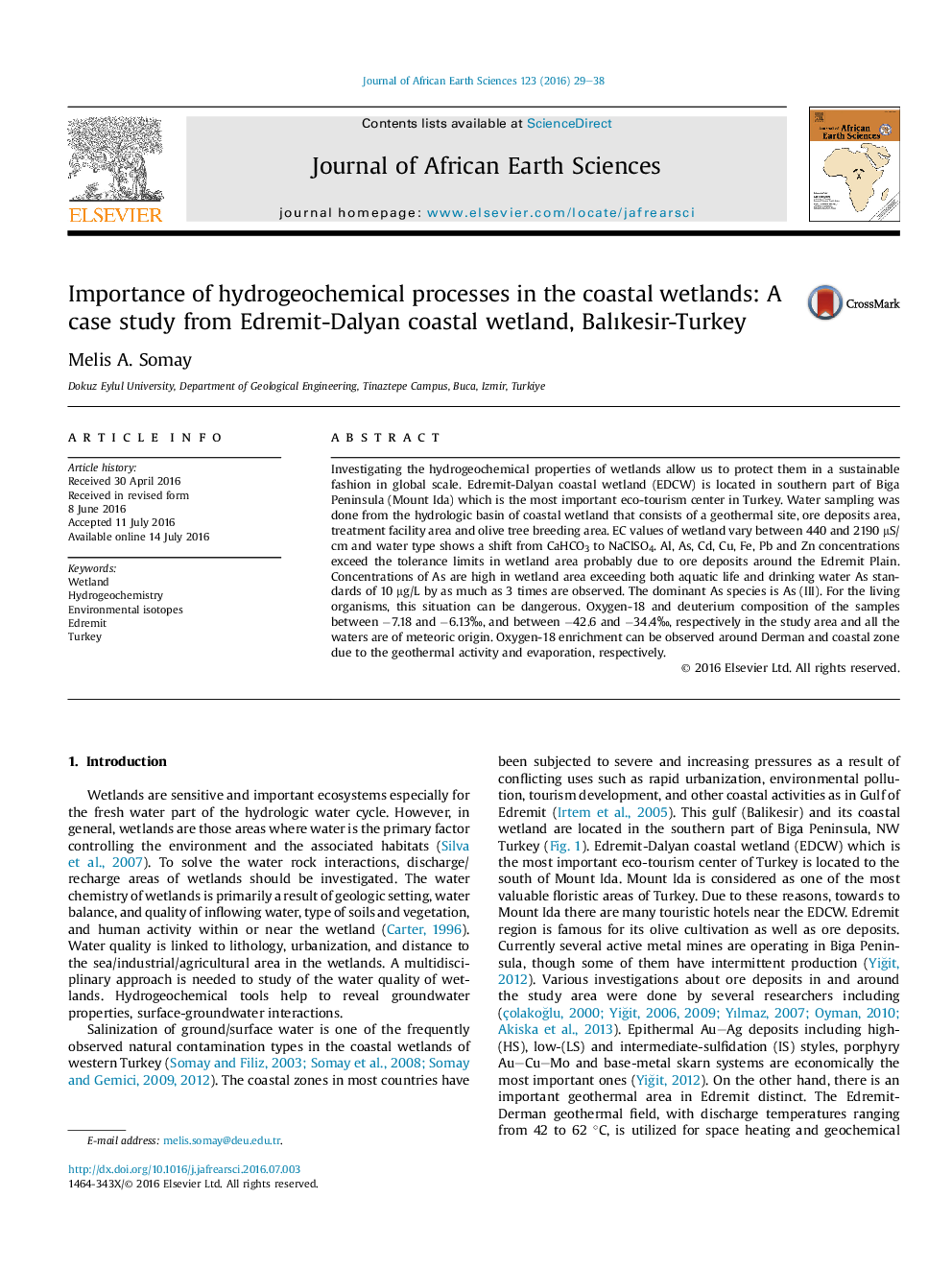| Article ID | Journal | Published Year | Pages | File Type |
|---|---|---|---|---|
| 4728167 | Journal of African Earth Sciences | 2016 | 10 Pages |
•Water facies types show a shift from CaHCO3 to NaClSO4.•Concentrations of Al, As, Cd, Cu, Fe, Pb and Zn are exceeded tolerance limits in the wetland.•The dominant specie of arsenic is As (III) and this situation is toxic for the living matters.
Investigating the hydrogeochemical properties of wetlands allow us to protect them in a sustainable fashion in global scale. Edremit-Dalyan coastal wetland (EDCW) is located in southern part of Biga Peninsula (Mount Ida) which is the most important eco-tourism center in Turkey. Water sampling was done from the hydrologic basin of coastal wetland that consists of a geothermal site, ore deposits area, treatment facility area and olive tree breeding area. EC values of wetland vary between 440 and 2190 μS/cm and water type shows a shift from CaHCO3 to NaClSO4. Al, As, Cd, Cu, Fe, Pb and Zn concentrations exceed the tolerance limits in wetland area probably due to ore deposits around the Edremit Plain. Concentrations of As are high in wetland area exceeding both aquatic life and drinking water As standards of 10 μg/L by as much as 3 times are observed. The dominant As species is As (III). For the living organisms, this situation can be dangerous. Oxygen-18 and deuterium composition of the samples between −7.18 and −6.13‰, and between −42.6 and −34.4‰, respectively in the study area and all the waters are of meteoric origin. Oxygen-18 enrichment can be observed around Derman and coastal zone due to the geothermal activity and evaporation, respectively.
